In the era of urbanization and shrinking living spaces, compact living has become more than just a trend; it’s a lifestyle necessity. Designing small bedrooms that integrate functional workspaces not only optimizes limited square footage but also fosters creativity in organizing personal havens. This article delves into strategies and design philosophies that turn cramped quarters into efficient, comfortable, and aesthetically pleasing living environments.
Understanding the Importance of Spatial Awareness
Before diving into layout specifics, it’s crucial to grasp the essence of spatial awareness. In compact living, every inch counts, demanding a meticulous approach to space planning. By acknowledging the flow of movement, natural light paths, and storage opportunities, one can transform a small bedroom into a multi-functional haven without compromising on comfort or style.
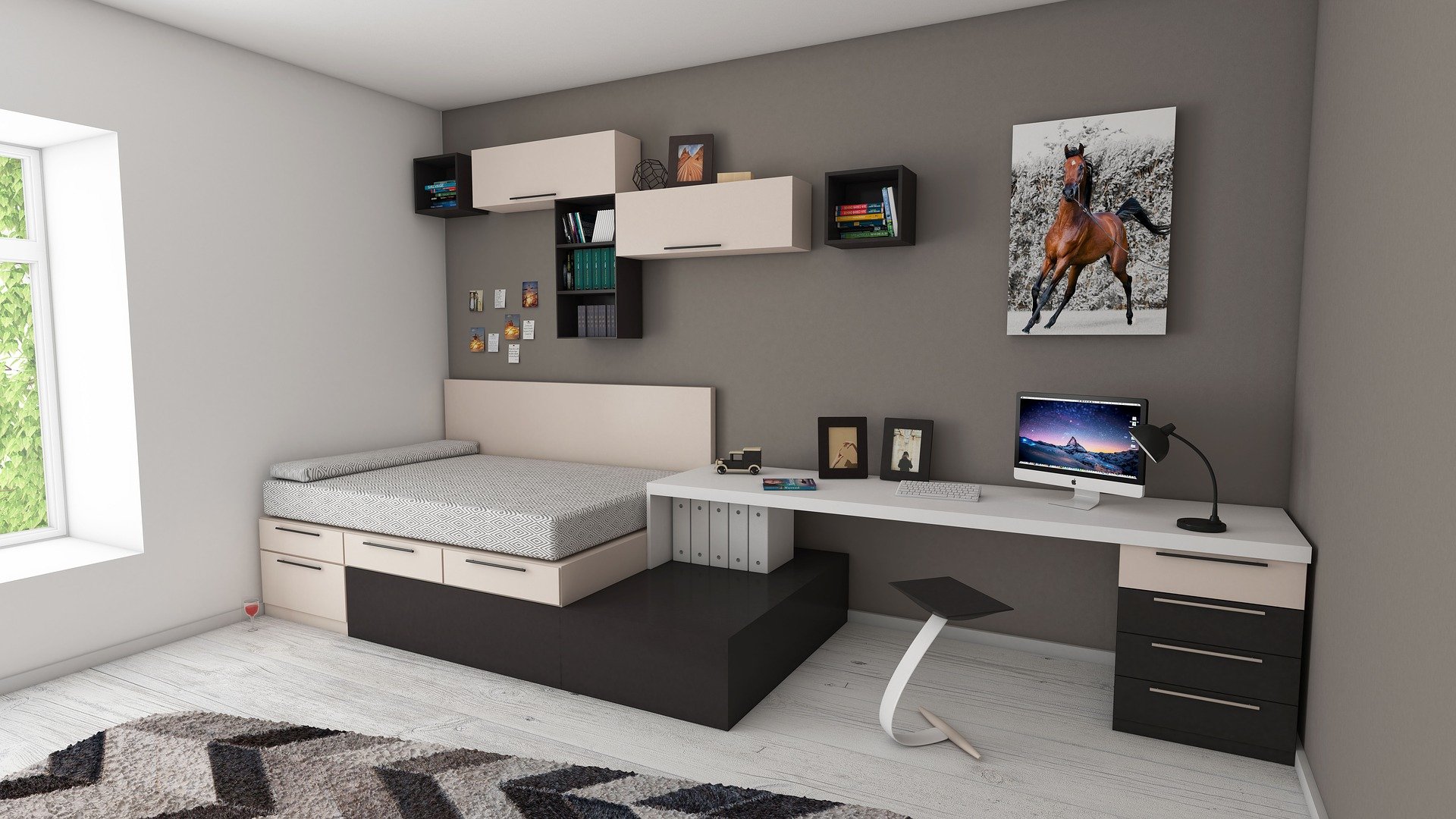
Maximizing Natural Light for Illusion of Space
Light as an Expander
Natural light is the unsung hero of small spaces. It not only brightens up the room but also creates an illusion of spaciousness. Position the desk near a window to capitalize on daylight, reducing the need for artificial lighting during daytime hours. Mirrors strategically placed opposite windows further amplify this effect, reflecting light and visually doubling the space.
Clever Furniture Selection: Multi-Functional Pieces
Dual-Purpose Furniture Magic
In compact bedrooms, furniture must work double, if not triple duty. Invest in a bed with built-in drawers or a hydraulic lift system for storage underneath. A desk that converts into a nightstand or a wall-mounted folding desk not only saves floor space but also adapts to your changing needs throughout the day. Consider a sofa bed for guests or a modular bookshelf that doubles as a room divider, creating distinct zones within the same area.
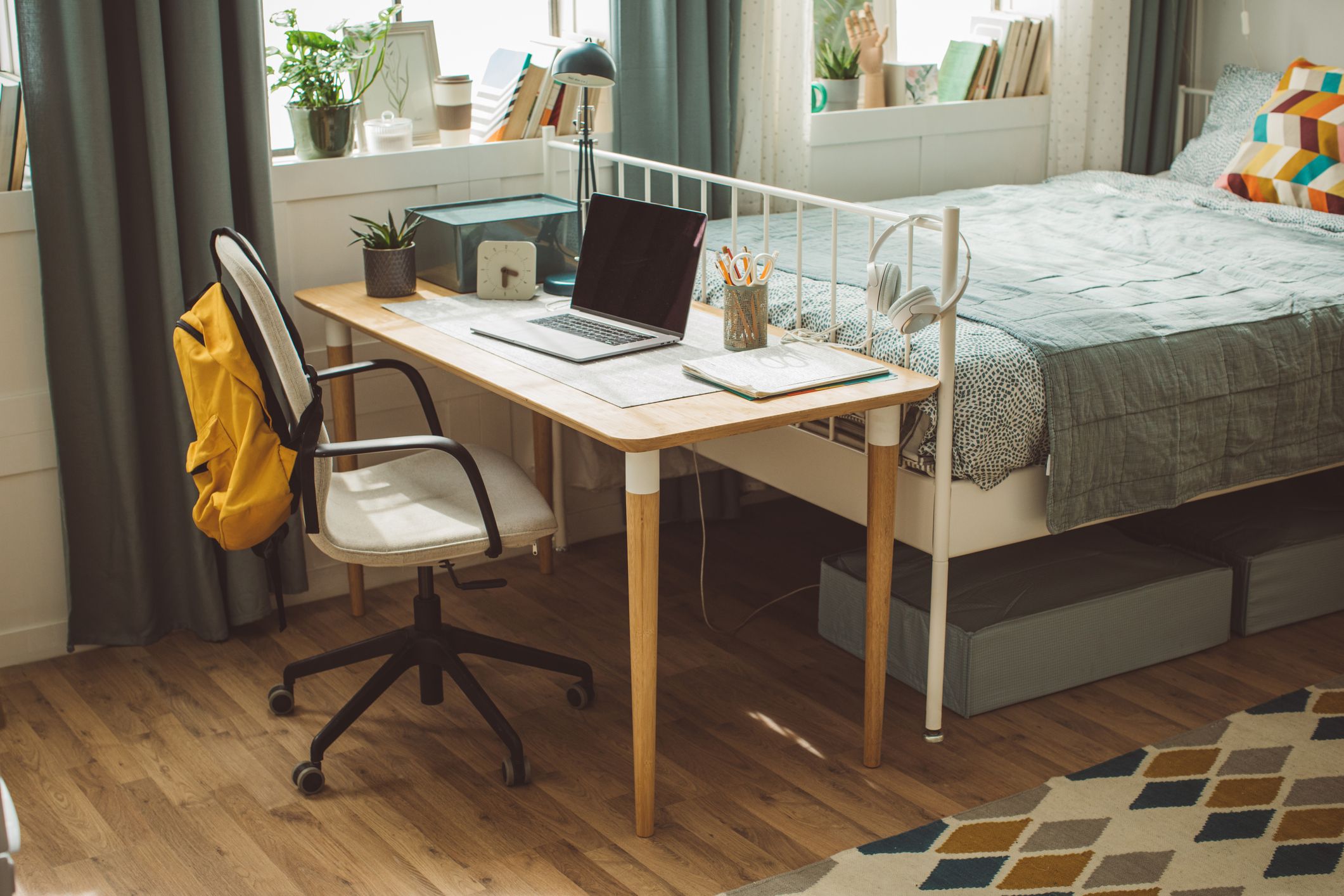
Vertical Space Utilization: Think Upwards
The Sky’s the Limit
When floor space is scarce, look upwards. High shelves, hanging organizers, and floating cabinets maximize storage capacity without cluttering the room. A loft bed with a desk underneath is a classic solution for students or young professionals, freeing up valuable floor real estate. Don’t forget about the walls—install pegboards or magnetic strips for tool and accessory organization, keeping your workspace uncluttered.
Color and Texture: The Art of Optical Illusion
Visual Expansion through Décor
The right color palette and textures can significantly impact how spacious a room feels. Light, neutral hues on walls and larger furniture pieces create an open, airy atmosphere. Accentuate with pops of color through accessories and textiles to add depth and character without overwhelming the space. Textures such as sheer curtains and fluffy rugs soften the look, contributing to a cozy yet visually expanded environment.
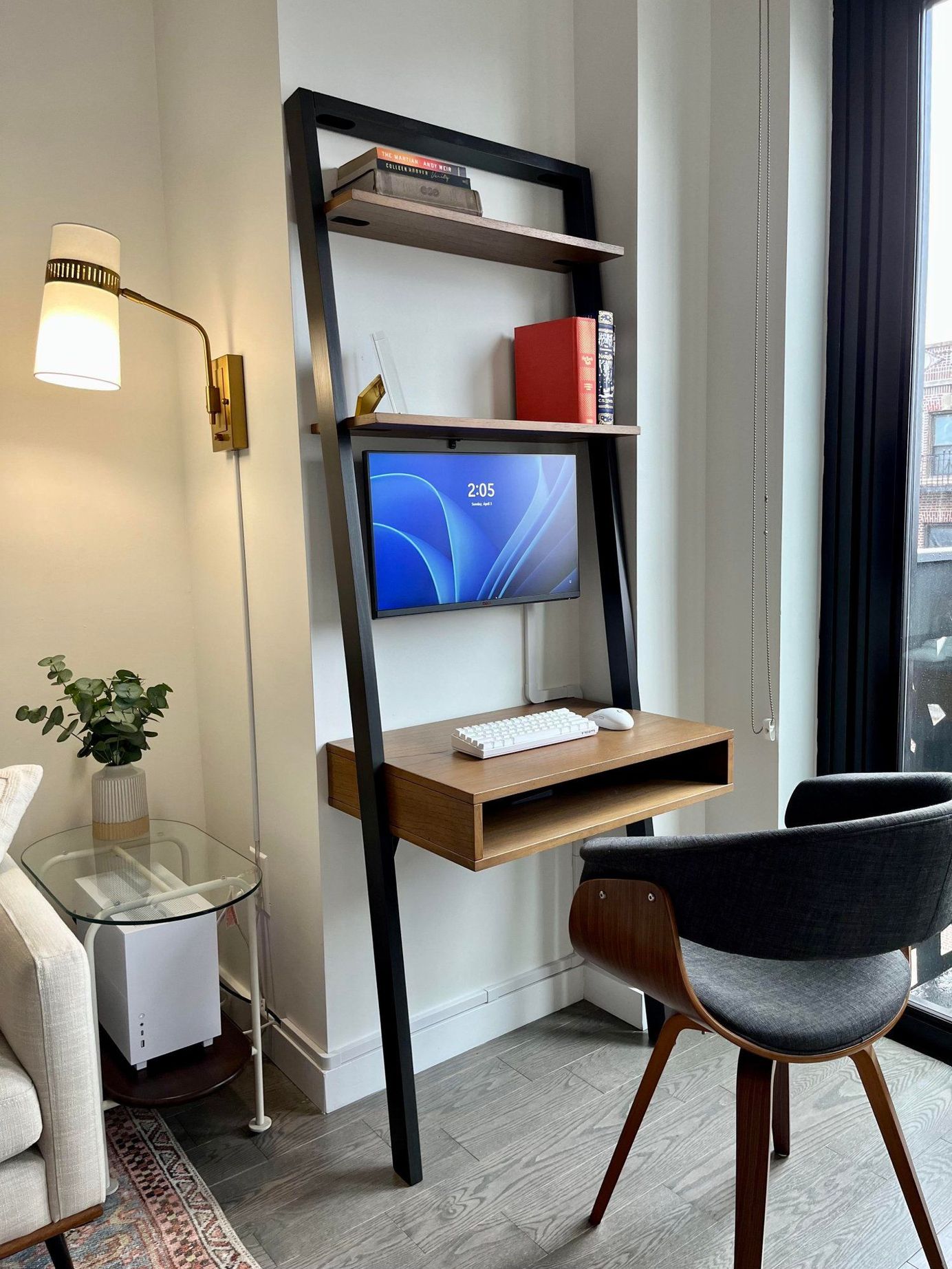
Smart Lighting Solutions for Mood and Functionality
Layered Illumination
Thoughtful lighting design is pivotal in compact spaces. Layer your lighting with a combination of ambient, task, and accent lights. A central ceiling fixture provides general illumination, while a desk lamp offers focused light for work. Add dimmers to control the mood and ambiance, and consider installing LED strip lighting under shelves or along the ceiling perimeter to visually expand the room’s dimensions.
Innovative Storage Hacks for Tidiness
Hidden Gems
Innovative storage solutions keep clutter at bay, essential for maintaining a serene atmosphere in small bedrooms. Utilize the back of the door for hanging organizers, install floating shelves above the desk for books and stationery, and opt for ottomans with hidden storage compartments. Consider a wall-mounted bike rack or a pulley system for storing items like bicycles or ironing boards, freeing up floor space.
Creating a Cohesive Design Aesthetic
Harmony in Design
A cohesive design scheme unifies the space, making it feel more extensive and purposeful. Choose a design theme or color story and stick to it. Minimalist and Scandinavian designs often excel in compact settings due to their emphasis on simplicity, functionality, and natural elements. Integrate greenery through small potted plants or a vertical garden to introduce life and freshness without taking up much room.
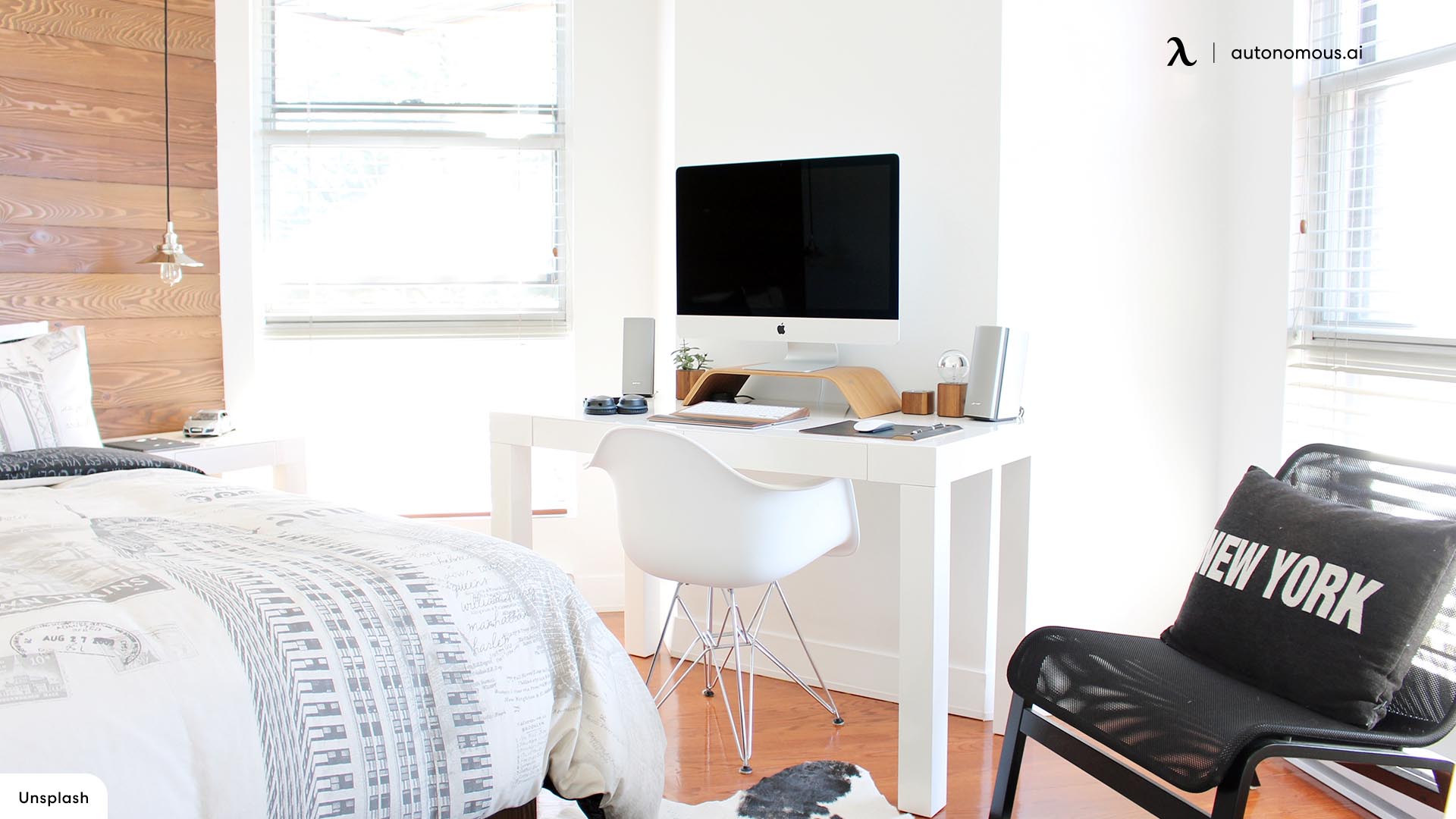
Psychology of Space: Mindful Living in Compact Environments
Space for the Soul
Compact living doesn’t mean sacrificing mental wellbeing. Incorporate personal touches like artwork, photographs, or a favorite chair to create a sense of belonging and tranquility. Designate a corner for meditation or yoga, even if it’s just a mat’s width, to foster mindfulness and relaxation. Remember, it’s not about the quantity of space but the quality of life within those spaces.
Incorporating Technology for Seamless Integration
Embracing technology can further enhance the functionality of compact living spaces. Smart home systems allow for seamless control over lighting, temperature, and even window treatments, creating an adaptable environment that morphs according to your daily routines. Motorized blinds can be programmed to let in natural light at optimal times or close for privacy and insulation. Voice-controlled assistants can manage your playlist, set reminders, or even help with work-related tasks, all without cluttering your workspace with additional devices.
Flexible Room Dividers for Dynamic Spaces
One of the most innovative ways to delineate spaces within a compact bedroom is through the use of flexible room dividers. These can range from lightweight curtains to sliding panels or even bookshelves on casters. They offer the flexibility to reshape your space according to your needs, providing privacy when needed and opening up the room for a more spacious feel when desired. A cleverly designed divider can also double as a projection screen for movie nights, adding another layer of versatility to your compact haven.
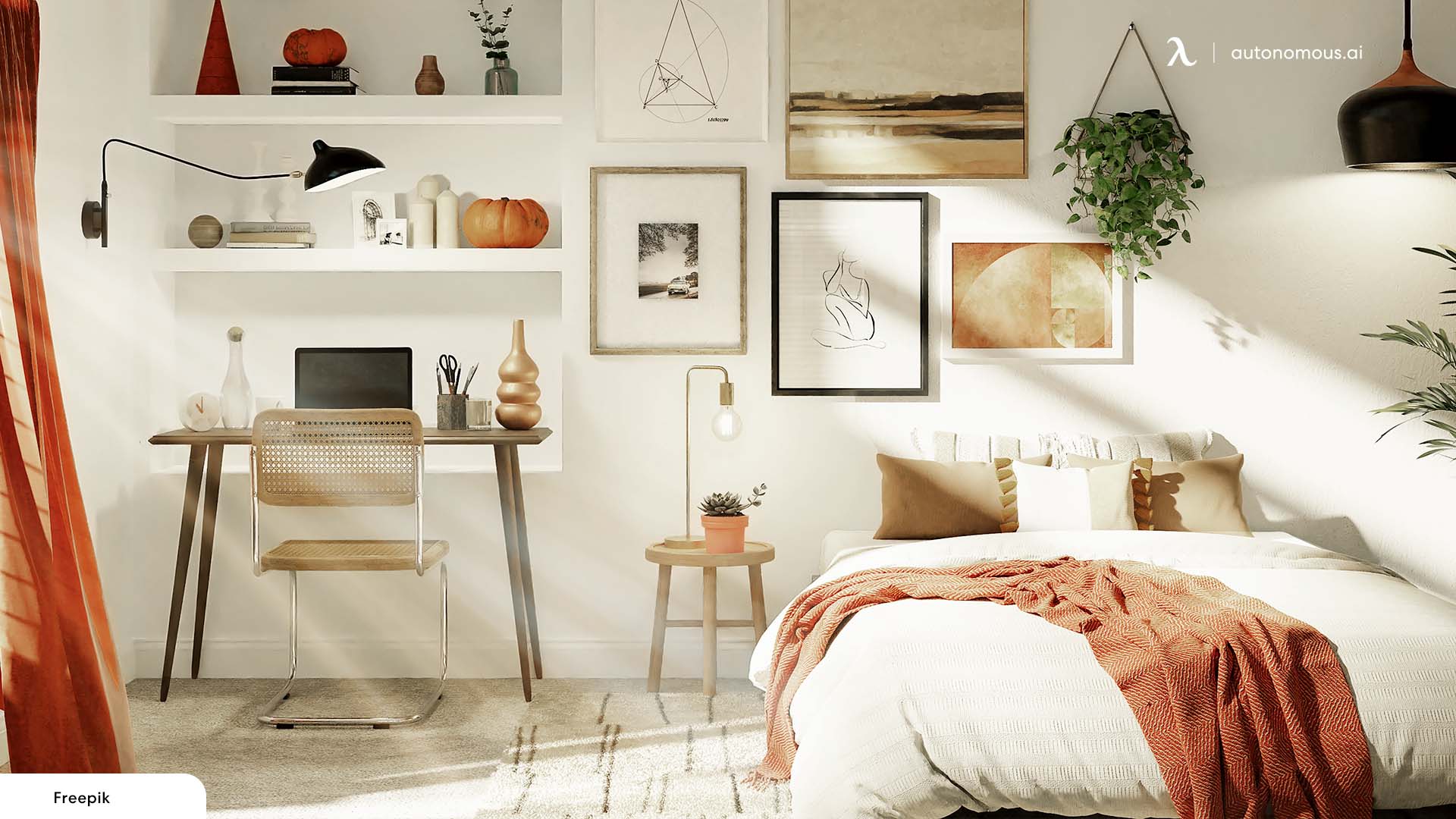
Sustainable Solutions for Conscious Living
As we optimize our small spaces, it’s crucial to consider sustainability. Eco-friendly materials, energy-efficient appliances, and recycled or repurposed furniture not only reduce environmental impact but can also infuse character and uniqueness into your space. Opt for LED lighting, which consumes less energy and lasts longer. Use natural materials like bamboo or reclaimed wood for desks and shelves, and choose low-VOC paints to improve indoor air quality. Compact living presents an opportunity to live more sustainably by necessity, encouraging mindful consumption and waste reduction.
Personalizing Your Workspace for Inspiration
While functionality is paramount, don’t overlook the importance of personalizing your workspace to stimulate creativity and productivity. Display artwork or prints that inspire you, or create a vision board above your desk. Integrate a small speaker system to play music that enhances focus. Even in limited space, a well-curated selection of items can make your workspace feel like an extension of your personality, fostering a sense of motivation and joy in your daily endeavors.
Conclusion: Compact Living, Grand Living
In conclusion, maximizing space in small bedrooms with integrated desk layouts requires a blend of creativity, practicality, and a dash of ingenuity. By embracing smart furniture choices, utilizing vertical space, playing with light and color, and incorporating storage hacks, compact living can be transformed from a challenge into an exercise in elegant, efficient design. Remember, living small doesn’t equate to living less—it’s about living intentionally and cherishing every square foot of your personalized sanctuary.

